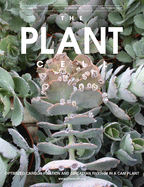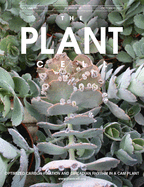
Cover image

Crassulacean acid metabolism (CAM) is a highly water-use-efficient metabolic adaptation of photosynthetic CO2 fixation that is under strict temporal control mediated by the endogenous circadian clock. Boxall et al. (pages
Volume 29, Issue 10, October 2017
IN BRIEF
Evidence for Two Distinct Stages in Secondary Cell Wall Formation of Xylem
A Phloem Protein Contributes to Aphid Resistance and Heat Stress Tolerance
Thrown for a Loop: How RNase H1 and DNA Gyrases Limit R-Loops and Maintain Genome Stability in Chloroplasts
Clipping Chlamy Genes: Improved Methods for Targeted Gene Editing in Chlamydomonas
Stop the Clock: Optimized Carbon Fixation and Circadian Rhythm in a CAM Plant
Making Connections: MAC Function in Splicing and MicroRNA Biogenesis
Proliferate at Your Own Risk: Ribosomal Stress and Regeneration
REVIEW
Plant Signaling and Metabolic Pathways Enabling Arbuscular Mycorrhizal Symbiosis
LARGE-SCALE BIOLOGY ARTICLES
De Novo Assembly of a New Solanum pennellii Accession Using Nanopore Sequencing
With no capital costs, inexpensive Oxford Nanopore sequencing can be applied to novel ∼1-Gb plant genomes.
Genome-Wide Association Mapping Reveals That Specific and Pleiotropic Regulatory Mechanisms Fine-Tune Central Metabolism and Growth in Arabidopsis
Many enzyme activity and metabolite quantitative trait loci (QTL) colocalize, including a pleiotropic QTL at ACCELERATED CELL DEATH6 that points to a trade-off between defense and central metabolism.
Novel Loci Underlie Natural Variation in Vitamin E Levels in Maize Grain
This joint linkage and genome-wide association study comprehensively investigates natural variation in maize grain vitamin E levels using the 5000-line U.S. nested association-mapping panel.
Changes in Gene Expression in Space and Time Orchestrate Environmentally Mediated Shaping of Root Architecture
Tracking cell-type transcriptomic responses to treatments that change root development at an unprecedented level of temporal detail reveals molecular mechanisms that shape root architecture.
RESEARCH ARTICLES
POLYGALACTURONASE INVOLVED IN EXPANSION3 Functions in Seedling Development, Rosette Growth, and Stomatal Dynamics in Arabidopsis thaliana
The polygalacturonase PGX3 functions in tissue growth and stomatal dynamics in Arabidopsis thaliana, revealing how controlled pectin degradation influences stomatal function.
Two Complementary Mechanisms Underpin Cell Wall Patterning during Xylem Vessel Development
The CELLULOSE SYNTHASE INTERACTING1 protein directs secondary wall patterning during the early phases of xylem vessel development.
SIEVE ELEMENT-LINING CHAPERONE1 Restricts Aphid Feeding on Arabidopsis during Heat Stress
Genome-wide association mapping and protein characterization reveal that the small heat shock-like protein SLI1 restricts phloem feeding by aphids and improves seed set during heat stress.
CAMTA-Mediated Regulation of Salicylic Acid Immunity Pathway Genes in Arabidopsis Exposed to Low Temperature and Pathogen Infection
CAMTA3-mediated repression of SA pathway genes in nonstressed plants involves action of a repression module that acts independently of calmodulin binding, a finding that challenges current models.
RNase H1 Cooperates with DNA Gyrases to Restrict R-Loops and Maintain Genome Integrity in Arabidopsis Chloroplasts
R-loop homeostasis in Arabidopsis plastid determines chloroplast genome stability and development.
Targeting of Photoreceptor Genes in Chlamydomonas reinhardtii via Zinc-Finger Nucleases and CRISPR/Cas9
Using optimized protocols, nuclear photoreceptor genes were successfully modified or inactivated in the alga Chlamydomonas via directed gene targeting using zinc-finger nucleases or the nuclease Cas9.
Phosphorylation of Phosphoenolpyruvate Carboxylase Is Essential for Maximal and Sustained Dark CO2 Fixation and Core Circadian Clock Operation in the Obligate Crassulacean Acid Metabolism Species Kalanchoë fedtschenkoi
Silencing phosphoenolpyruvate carboxylase kinase in a CAM species more than halves dark period CO2 fixation and causes arrhythmia in some components of the central circadian clock.
The Photorespiratory Metabolite 2-Phosphoglycolate Regulates Photosynthesis and Starch Accumulation in Arabidopsis
The photorespiratory metabolite 2-phosphoglycolate is central in a control loop that regulates photosynthetic CO2 fixation and starch accumulation in response to changes in the environment.
ABA-Induced Stomatal Closure Involves ALMT4, a Phosphorylation-Dependent Vacuolar Anion Channel of Arabidopsis
The ALMT4 anion channel of Arabidopsis mediates Mal2− efflux from the vacuole during stomatal closure and its activity depends on phosphorylation.
Fusicoccin Activates KAT1 Channels by Stabilizing Their Interaction with 14-3-3 Proteins
The phytotoxin fusicoccin stabilizes the interaction between KAT1 channels and their regulatory protein 14-3-3, leading to an increase in the number and in the activity of the channels.
Maize NPF6 Proteins Are Homologs of Arabidopsis CHL1 That Are Selective for Both Nitrate and Chloride
Maize NPF6 proteins transport both nitrate and chloride with different specificity and activity that is influenced by the presence or absence of a proposed nitrate-binding His residue in NPF6.
The F-Box Protein ZYGO1 Mediates Bouquet Formation to Promote Homologous Pairing, Synapsis, and Recombination in Rice Meiosis
ZYGO1, a novel F-box protein that interacts with OSK1, mediates bouquet formation to promote pairing, synapsis, and CO formation in rice meiosis.
SCD1 and SCD2 Form a Complex That Functions with the Exocyst and RabE1 in Exocytosis and Cytokinesis
Plants have evolved to utilize the SCD complex, which is architecturally distinct from—but performs similar functions as—the structurally related exocytic yeast and mammalian Sec2/Rabin8 Rab GEFs.
The Arabidopsis MOS4-Associated Complex Promotes MicroRNA Biogenesis and Precursor Messenger RNA Splicing
The Arabidopsis MOS4-associated complex promotes microRNA biogenesis and precursor messenger RNA splicing.
Evidence for a Role of ANAC082 as a Ribosomal Stress Response Mediator Leading to Growth Defects and Developmental Alterations in Arabidopsis
The existence of a ribosomal stress response in plant cells is revealed by molecular genetic studies that implicate ANAC082 as a crucial mediator of this pathway.
The Maize Imprinted Gene Floury3 Encodes a PLATZ Protein Required for tRNA and 5S rRNA Transcription through Interaction with RNA Polymerase III
Fl3 is regulated by genomic imprinting and encodes a PLATZ protein involved in protein-protein interaction with RNAPIII for biogenesis of tRNAs and 5S rRNA.


